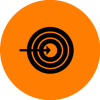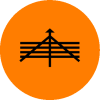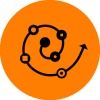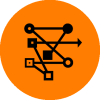Decision Dynamics Career Model™
What is a successful career? Ask several persons this question and you will get many different answers. People’s perspectives on careers vary in terms of, for example, how long one would ideally stay in the same occupational field, or which direction one’s career should develop. This will have great effect on what competencies one develops, what one finds engaging and during which circumstances that performance is the highest. Based on more than 40 years of research, the Career Model highlights four main Career Concepts or views of the ideal career.

Expert
The Expert Career Concept is the most stable and historically dominant view of a successful career as being a lifelong commitment to a profession with which one identifies. Success means to be the best, i e the expert in one's area.

Linear
The Linear Career Concept is instead focused on rapid movement upward the "corporate ladder". Success is measured in the level one has reached, which can be translated in responsibility, power and influence.

Spiral
The Spiral Career Concept is a less traditional view where one rather discovers one's career through periodic (5-10 years) lateral changes of occupational fields. Success means frequent opportunities to widen one's competence base and get new experiences.

Transitory
The Transitory Career Concept is the most change-oriented and least conventional view, even to the extent that many consider it as not even a career. The more different and frequent the changes, the better.
People differ with regards to how much every career concept matches their opinion of what an optimal career concept is. People also differ in terms of how much their motives match each of the concepts.
However, career development is not only attained by helping others understand their own motives and perceptions of “success”. Career paths are also highly defined by one’s work organization, where we can speak of them in terms of organization cultures. Cultural inconsistencies are often “solved” by aligning the components according to one primary orientation, such as Linear (that is, a growth strategy with a tall pyramid structure, profit-oriented performance appraisal and promotion as the main reward).
The primary strength of the Career Model is that the underlying categories may build a bridge between the individual and organizational sides of business management. While HR staff tend to initially focus on individual applications, managers are typically more interested in possibilities to work more with the organizational culture. Because these two sides can be combined, HR can get more strategically oriented and the management may enjoy higher precision in their employee policies.
Individual Profiles
- CareerView™ Career Report: Career Concepts and Motives
- CareerView™ Culture View Report: the individual’s experience of the culture
- CareerView™ Culture Fit Report: motivational gaps motives – culture
- CareerView™ Jobfit Profile: the individual’s fit with job position
- CareerView™ Job Profile: prioritization of Development Competencies
- CareerView™ Job Profiling Results: combined prioritization of Development Competencies
The individual profiles are used with staffing, feedforward sessions, career counselling and coaching at all levels in the organization as well as in leadership training. Also for competency planning, succession planning and talent management.
Group- and organization profiles
- CareerView™ Motivation Survey: Career Concepts and Motives in groups
- CareerView™ Career Culture Survey: engaging culture
The group- and organization profiles are used with business planning and organization development. Also as support for developing motivating evaluation and reward systems.
